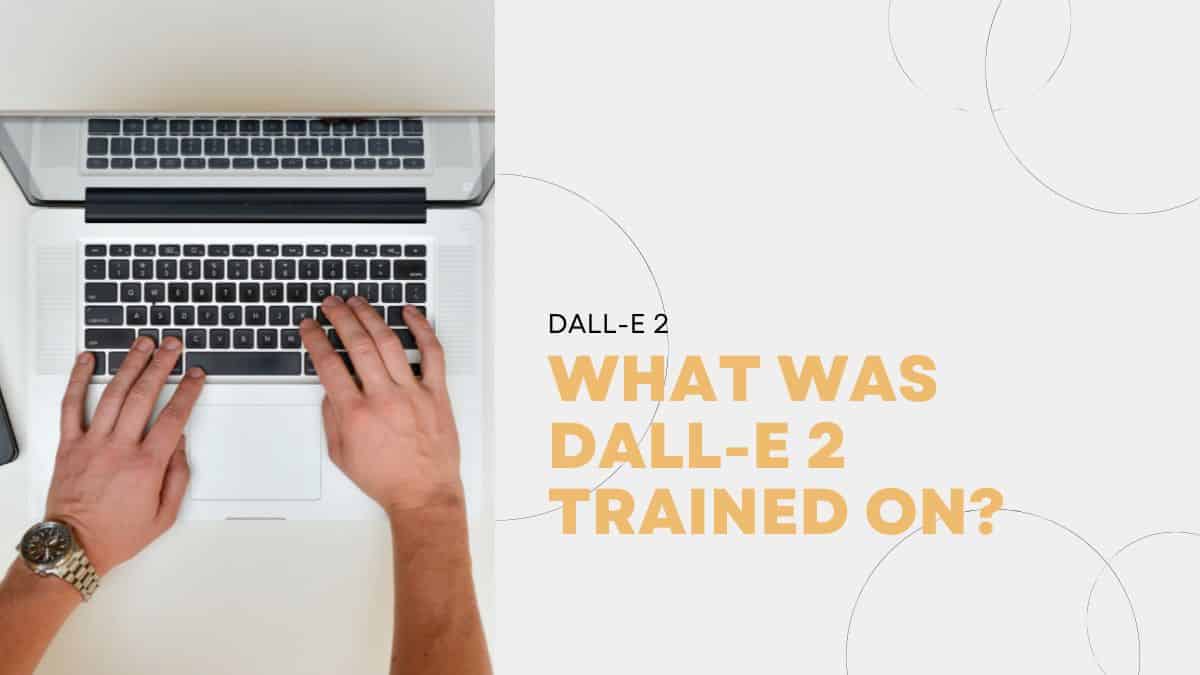What Was Dall-E 2 Trained On?

Table of Contents
Dall-E 2 is a powerful artificial intelligence language model that can generate images from text descriptions. You might wonder what Dall-E 2 was trained on to accomplish such a feat. The answer lies in the massive amount of data the model was trained on.
So, What OpenAI Has Trained it On?
OpenAI has trained Dall-E 2 on a massive dataset containing millions of images and corresponding text descriptions. OpenAI created this entire dataset by crawling the internet and collecting images from various sources, including social media, search engines, and image-hosting websites.
Prime Day is finally here! Find all the biggest tech and PC deals below.
- Sapphire 11348-03-20G Pulse AMD Radeon™ RX 9070 XT Was $779 Now $739
- AMD Ryzen 7 7800X3D 8-Core, 16-Thread Desktop Processor Was $449 Now $341
- ASUS RTX™ 5060 OC Edition Graphics Card Was $379 Now $339
- LG 77-Inch Class OLED evo AI 4K C5 Series Smart TV Was $3,696 Now $2,796
- Intel® Core™ i7-14700K New Gaming Desktop Was $320.99 Now $274
- Lexar 2TB NM1090 w/HeatSink SSD PCIe Gen5x4 NVMe M.2 Was $281.97 Now $214.98
- Apple Watch Series 10 GPS + Cellular 42mm case Smartwatch Was $499.99 Now $379.99
- ASUS ROG Strix G16 (2025) 16" FHD, RTX 5060 gaming laptop Was $1,499.99 Now $1,274.99
- Apple iPad mini (A17 Pro): Apple Intelligence Was $499.99 Now $379.99
*Prices and savings subject to change. Click through to get the current prices.
The images in the dataset cover a wide range of subjects, from animals and plants to objects and scenes. The text descriptions are diverse, ranging from simple phrases to more complex sentences and paragraphs.
The dataset was carefully curated to ensure it represented the real world. It includes images and descriptions of common objects and scenes people encounter daily. It includes images and descriptions of unusual and exotic subjects, such as rare animals and obscure landmarks.
What is the Training Process?
To train Dall-E 2, the dataset was fed into the model in batches. OpenAI then trained the model to generate images from the text descriptions using supervised learning.
During the training process, Dall-E 2 learned to recognize patterns in the data and use them to generate new images. The model learned from its mistakes and adjusted its parameters to improve performance. The massive amount of data gave the model a wealth of information to draw from when generating new images.
The Benefits of Dall-E 2
Dall-E 2 has many practical applications in a variety of fields, including design, marketing, and entertainment. For example, it can generate images for websites and advertising campaigns or create illustrations for books and magazines.
Dall-E 2 can generate images for virtual reality and video games, where realistic graphics are essential for creating an immersive experience. Additionally, designers can generate images for scientific research, such as creating simulations of complex systems or visualizing data.
Dall-E 2 can help people with disabilities, such as people with visual impairment. By generating images from text descriptions, Dall-E 2 can visually represent the world that might otherwise be inaccessible to people with certain disabilities.
Conclusion
OpenAI trained Dall-E 2 on a massive dataset of images and text descriptions. The company carefully curated this dataset to ensure it represented the real world. And the company trained the model using supervised learning to generate images from text descriptions.
The dataset size had a crucial role in making Dall-E 2 so powerful, and it has many practical applications in various fields. From design and marketing to scientific research and entertainment, Dall-E 2 has the potential to revolutionize the way we create and interact with visual media.

